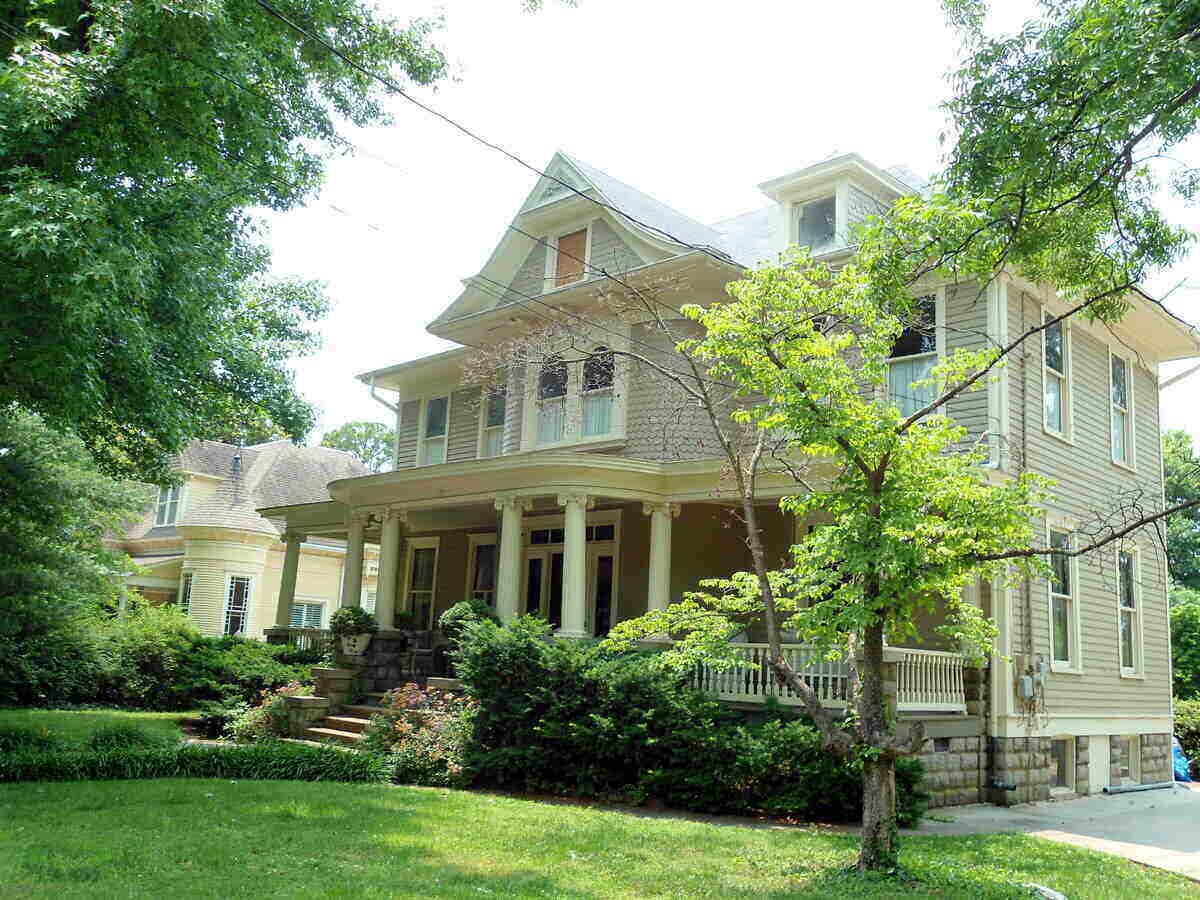
Picking the best grass seed for your Arkansas lawn is not as straightforward as it seems. Because the Natural State lies in the transition zone, both warm-season and cool-season grasses can grow here.
However, some parts of the state have colder winters that can damage most warm-season grasses, while others are too hot for cool-season types. Not any garden-variety grass will do. This guide to the best grass seed for Arkansas will help you choose the perfect grass type for your lawn based on what region you live in and your property’s specific needs.
1. Bermudagrass (Cynodon species)
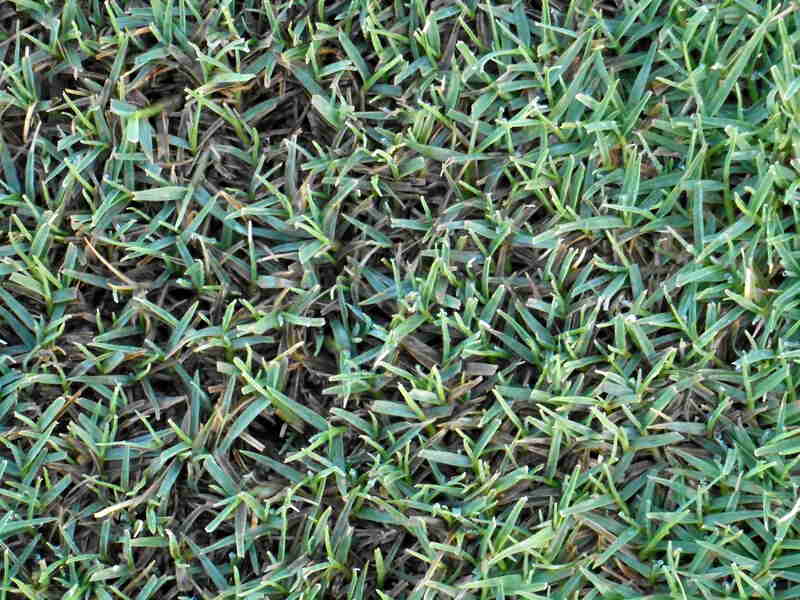
Used in homes, parks, and golf courses, Bermudagrass is one of the most common grass types throughout all of Arkansas. This grass is a lovely bright green and medium to fine in texture.
Pros: Bermudagrass can handle foot traffic very well, recovers quickly from damage, has excellent heat and drought tolerance, and doesn’t need much water. Despite being a warm-season grass, it can also tolerate the cold, so it can succeed from the warmer Gulf Coastal Plain to the chillier Ozarks.
Cons: Aside from having very poor shade tolerance, it’s a rather aggressive and fast-growing turfgrass. Bermudagrass can invade nearby flower beds if you’re not careful. It’s also a high-maintenance turf species that needs to be mowed often; hybrids definitely need a lot more attention during the summer when warm-season grasses grow vigorously.
- Classification: Warm-season grass
- Spreads Through: Aggressively through stolons (above-ground stems) and rhizomes (below-ground stems)
- Tolerances
- Shade: Low. Keep in full sun
- Drought: High
- Foot Traffic: High. Recovers quickly from damage
- Diseases and Pests: Good resistance to disease, but diseases are common; low resistance toward insects. Spring dead spot is the most problematic disease
- Maintenance Needs: Needs frequent mowing due to fast growth rate, develops thatch easily, and needs regular fertilization
- Mowing Height: ½ to 1 ½ inches for hybrid cultivars, 1 ½ to 2 ½ for common Bermudagrass
- Soil pH: 6 to 6.5
- Soil Type: Tolerates most soil types
Growing Bermudagrass from seed isn’t too difficult. It’s better to plant hybrid Bermudagrass (Cynodon dactylon x. Cynodon transvaalensis) over common Bermudagrass, as it’s hardier, finer, and has better color. Here are some Bermuda cultivars that the University of Arkansas System’s Division of Agriculture (UADA) recommends:
- ‘Barbados’
- ‘Contessa’
- ‘Riviera’
- ‘Yukon’ – this cultivar is especially suited to the colder regions of northern Arkansas
Grass Seed Options:
– Scotts Turf Builder Bermudagrass (10-lb. bag)
– Hancock Seed Co. Bermudagrass (50-lb. bag)
2. Zoysiagrass (Zoysia species)
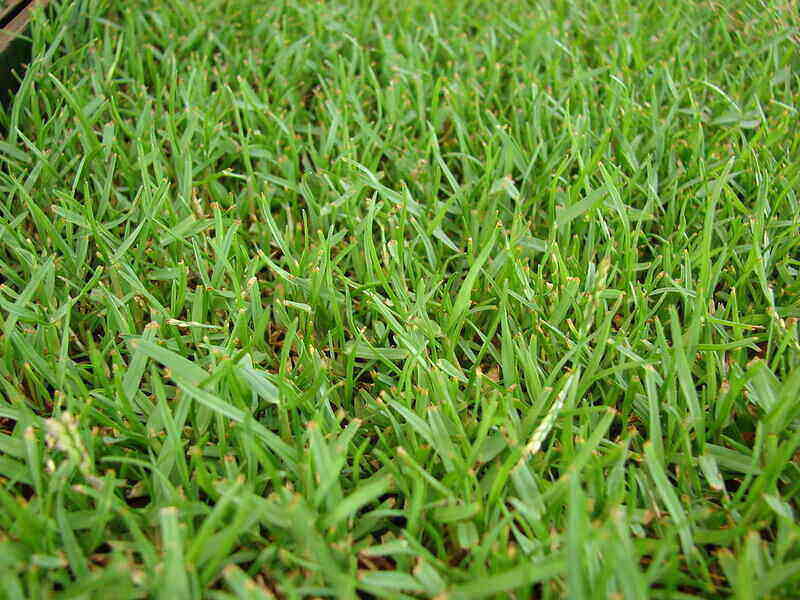
If you want a low-maintenance alternative to Bermudagrass, then consider seeding your lawn with Zoysiagrass. Throughout Arkansas, two species of this deep emerald warm-season grass are planted: Zoysia japonica and Zoysia matrella.
Pros: Zoysia is a slow-growing grass, so you don’t have to mow it as often as a Bermuda lawn. It’s also just as hardy – or even hardier – than Bermudagrass when it comes to wear and tear, heat, drought, and cold.
Cons: Like Bermudagrass, it also likes spreading into nearby landscape beds, so it needs to be edged. Although it has better cold tolerance than other warm-season grasses, Zoysia comes out of dormancy slower in spring. It’s also prone to developing thatch, especially when overfertilized.
- Classification: Warm-season grass
- Spreads Through: Stolons and rhizomes
- Tolerances
- Shade: Moderate
- Drought: Moderate to High
- Foot Traffic: High
- Diseases and Pests: Good resistance to disease, but recovers slowly
- Maintenance Needs: Doesn’t need a lot of fertilizer; it develops thatch easily when overfertilized
- Mowing Height: 1 to 2 inches
- Soil pH: 6 to 6.5
- Soil Type: While some cultivars tolerate various soil types, Zoysiagrasses typically prefer well-draining soils
Starting your lawn from scratch with this grass seed takes a while. Zoysia is one of the slower germinating grass types, and it can take several months before it fully establishes itself. However, you will be rewarded with a beautiful lawn that can handle a little shade.
Some Zoysiagrass cultivars have different textures: medium-coarse, medium, and fine. You should consider the ‘Compadre’ and ‘Zenith’ cultivars if you live further north because of their excellent cold hardiness.
Grass Plug and Seed Options:
– Zoysia Plugs (50 Large Grass Plugs)
– Zoysia Plugs (50 Full & Lush Grass Plugs)
– Zoysia Plugs (100 Plugs)
– Zenith Zoysia Grass Seeds (1/8 lb. of seeds)
3. Tall Fescue (Festuca arundinacea)
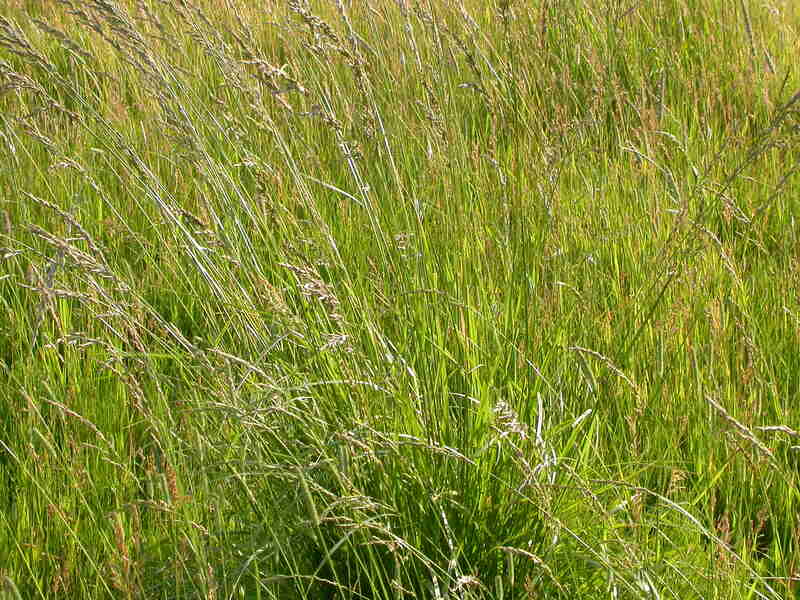
This cool-season grass is one of the most common turf species that Arkansan homeowners seed their lawns with. However, tall fescue and other cool-season grasses are only appropriate for the portion of the state that falls in the transition zone, which begins at Little River County in the west and Crittenden County in the east, continuing north through the rest of the state.
Pros: Tall fescue is the most heat-tolerant and drought-resistant cool-season grass species out there, making it a good fit for a transition zone state like Arkansas. It’s also a very winter-hardy and shade-tolerant grass, and it doesn’t invade flower beds.
Cons: While it can handle some heat, it’s not recommended for the lower third of the state, such as the Delta and the West Gulf Plain. In the summer, tall fescue lawns demand water to grow; even then, don’t expect good color or fast growth during the summer months. It also recovers slowly from damage and will need to be overseeded from time to time.
- Classification: Cool-season grass
- Spreads Through: Weakly through rhizomes, grows in bunches
- Tolerances
- Shade: Moderate
- Drought: Moderate to high, but extended drought will really hurt it
- Foot Traffic: Moderate
- Diseases and Pests: Moderate, tolerant when well-maintained
- Maintenance Needs: Needs frequent mowing, especially in the spring; isn’t prone to developing thatch; may need to be overseeded more often than other grass types
- Mowing Height: 2 inches, but only mow when the grass reaches 3 inches tall
- Soil pH: 5.5 to 6.5
- Soil Type: Tolerates a variety of soil conditions but does best in well-draining fertile clay soils
If you’re going to seed your lawn with tall fescue, the UADA highly recommends picking a turf-type tall fescue cultivar, or possibly even a blend of two or more varieties. Avoid the ‘Kentucky 31’ cultivar.
Grass Seed Options:
– Triple-Play Tall Fescue Grass Seed Blend (5000 sq ft)
– Eretz Kentucky 31 K31 Tall Fescue Grass Seed (choose your size)
– Pennington The Rebels Tall Fescue Grass Seed Mix (7 lb.)
4. Centipedegrass (Eremochloa ophiuroides)
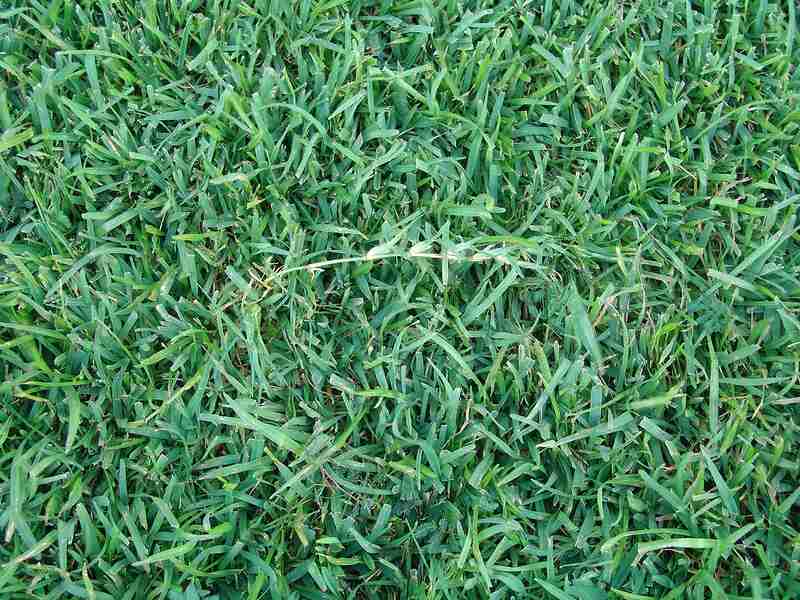
This warm-season grass is the best species for low-maintenance lawns in the southern half of the Natural State, but northwestern cities like Fayetteville and Bentonville are too cold for it to thrive. Preferring sandy, acidic soils, centipedegrass has a paler color than other grasses seeded in Arkansas. Although it grows slowly, it becomes dense and relatively weed-free.
Pros: Centipedegrass is very low-maintenance, requiring less mowing than Bermuda and St. Augustinegrass. It thrives in Arkansas soils as is, rarely needing liming or complete fertilizers. It’s also moderately shade-tolerant, and it’s more cold-tolerant than St. Augustine.
Cons: Using a fertilizer with extra nitrogen and phosphorus can kill this turfgrass species, so avoid overfertilizing it. Centipedegrass doesn’t handle drought, and it also has poor wear tolerance. Avoid planting it in high-traffic areas.
- Classification: Warm-season grass
- Spreads Through: Stolons
- Tolerances
- Shade: Moderate
- Drought: Moderate, but goes dormant during extended drought
- Foot Traffic: Low
- Diseases and Pests: Prone to centipedegrass decline and vulnerable to pests
- Maintenance Needs: Medium. Overfertilization can lead to thatch build-up and lawn death.
- Mowing Height: 1 to 2 inches
- Soil pH: 5 to 6
- Soil Type: Acidic, infertile, and moderately well-draining soils. Avoid very dense clay soils and soils that are too basic.
Although this species is typically sodded, it also does well when seeded. The UADA recommends the ‘TifBlair’ cultivar for homeowners living in the southern half of Arkansas.
Grass Seed Options:
– Gulf Kist Coated Centipedegrass Seeds (1 lb.)
– Scotts EZ Seed Patch and Repair Centipedegrass (3.75 lbs.)
– TifBlair Centipedegrass (5-lb. bag)
5. St. Augustinegrass (Stenotaphrum secundatum)
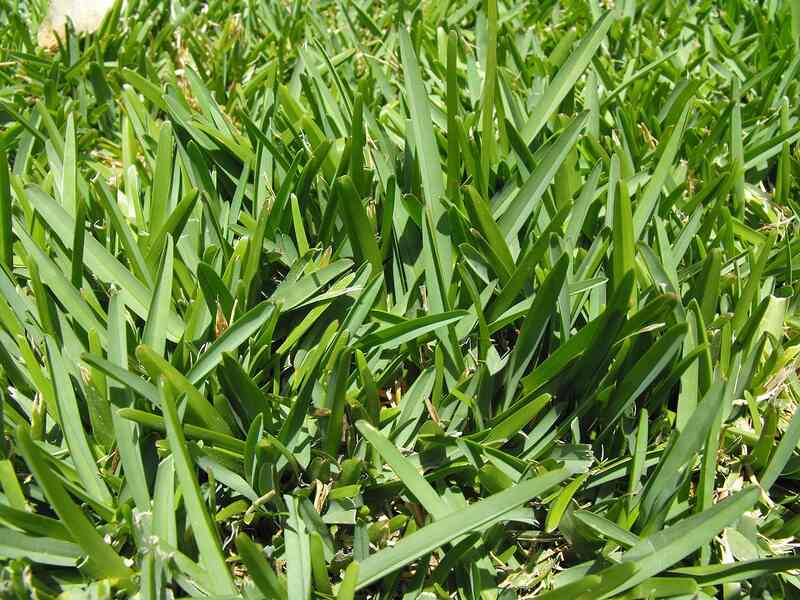
This turf species is yet another warm-season grass. St. Augustinegrass is planted only in the southern half of the state, as it can’t handle the cold winters of northern Arkansas. This grass is medium to dark green and is generally coarse in texture.
Pros: St. Augustinegrass is very resistant to the heat, so it can take on Arkansas summers with ease. It isn’t susceptible to weeds and is the most shade-tolerant warm-season grass out there. It also grows fast.
Cons: This turfgrass doesn’t handle the cold well. It also doesn’t appreciate heavy foot traffic. Because it grows fast, a St. Augustinegrass yard needs more lawn maintenance.
- Classification: Warm-season grass
- Spreads Through: Stolons
- Tolerances
- Shade: Moderate. Most shade-tolerant warm-season grass
- Drought: Moderate to high, but it will need water to stay green during drought
- Foot Traffic: Low
- Diseases and Pests: Moderate to High
- Maintenance Needs: Needs frequent mowing due to fast growth rate; develops thatch easily; needs regular fertilization (2-6 applications from spring to fall)
- Mowing Height: 3 ½ to 4 inches
- Soil pH: 6 to 7.5
- Soil Type: Tolerates most soil types, but prefers moderately fertile, moist soil. Doesn’t like compact soils.
If you’re looking for more cold-tolerant cultivars of St. Augustine, then consider the ‘Raleigh’, ‘Texas common’, and ‘Seville’ varieties. These can survive in Central Arkansas.
Grass Plug Options:
– Seed Ranch St Augustine Seville Grass Plugs (2 Trays)
– Seed Ranch St Augustine Floratam Grass Plugs (2 Trays)
Best Grass Seed for Northwest Arkansas
Northwest Arkansas is home to the Ozarks. Since the northern one-half or one-third of the state has a drier and colder climate – bordering on a humid continental climate – cool-season grasses like tall fescue and Kentucky bluegrass (KBG) do well here. In fact, this is the only area in the state that KBG can handle; typically, it’s planted along with tall fescue (90% tall fescue seeds, 10% KBG seeds).
The cold-tolerant Zoysiagrass and Bermudagrass can also thrive in the Ozark region despite being warm-season grasses.
Best Grass Seed for Central Arkansas
Central Arkansas, around the Little Rock metro area, has less extreme temperatures that make it possible for both warm-season and cool-season grasses to grow in this area. Centipedegrass and Zoysiagrass are good low-maintenance options for Central Arkansans. You can’t go wrong with tall fescue or Bermudagrass here either, but they will require a bit more TLC.
FAQs About the Best Grass Seed for Arkansas
The transition zone is the grass-growing region that cuts through the middle of the U.S. where warm-season and cool-season grasses can grow. This region presents some unique lawn care challenges, as warm-season grasses go dormant in the winter, while cool-season grasses struggle in the summer.
Most of Arkansas is in the transition zone. Only about the lower third of the state, including the southern portions of the Gulf Coastal Plain and the Mississippi Alluvial Plain, is too warm for cool-season grasses and so is not part of the transition zone.
The best time to plant grass seed in Arkansas depends on the type of grass you have. Generally, warm-season grasses should be seeded in the spring – between March and May – so they have time to establish before the summer heat really kicks in.
If you’re seeding a cool-season lawn, then aim to seed in the fall – around September to November. Planting too late won’t give your cool-season grass seedlings enough time to get ready for the winter.
If you’re overseeding a warm-season lawn for winter color, then seed in the fall.
Perennial ryegrass is most often used to overseed warm-season lawns in preparation for the winter. Some people use wheat, rye, and oats for temporary lawns.
Buffalograss is a soft, emerald-hued turfgrass that doesn’t require much maintenance. It also doesn’t mind drought conditions. Despite this, the UADA doesn’t recommend buffalograss for Arkansas lawns.
Why? Buffalograss doesn’t do well in humid areas with lots of rainfall, as it can’t compete with weeds. You’d need a lot of herbicide to maintain a healthy lawn.
Choosing the best grass seed for your lawn is only the first step. If you want to keep it healthy for years to come, you’ll have to keep up with a regular lawn care schedule that includes:
– Mowing: Mow your lawn at least once a week during its growing season.
– Watering: Give your lawn about 1 1/2 inches of lawn each week, no more and no less.
– Fertilizing: Feed your lawn with the right fertilizer at the right time each year. Learn more about fertilizing your lawn on our page about lawn fertilization in Arkansas.
– Aeration: Compacted soil can quickly kill grass, and lawn aeration is the solution. Learn everything you need to know about aeration on our page about lawn aeration in Arkansas.
– Weed Control: Weeds will steal water and nutrients from your grass, leaving it weak and scraggly. Instead of letting weeds take over, learn how to identify and control common Arkansas weeds on our page about weed control in Arkansas.
If all of this seems like too much work, we’ve got you covered! LawnStarter can connect you with local lawn care pros in Arkansas who will check all the lawn care tasks off your list without your having to lift a finger.
Grow a Beautiful Arkansas Lawn Today
Picking the right lawn grass for your Arkansas home goes a long way toward maintaining a healthy and green yard. However, it’s not enough; you have to pair it with proper lawn maintenance. Some turfgrasses, like Bermuda and St. Augustine, demand even more maintenance than others.
Why not leave your lawn in the capable hands of a professional lawn care company? That way, you can enjoy the wonders of the Natural State without worrying about the little pocket of nature on your own property. Connect with a lawn care professional on LawnStarter today! No matter if you’re in Little Rock, Fayetteville, Bentonville, or anywhere else in Arkansas, we have a pro near you who’s ready to help.
Main Image Credit: Brandonrush / Wikimedia Commons / CC BY-SA 3.0
LawnStarter participates in the Amazon Services LLC Associates Program, an affiliate advertising program. LawnStarter may earn revenue from products promoted in this article.